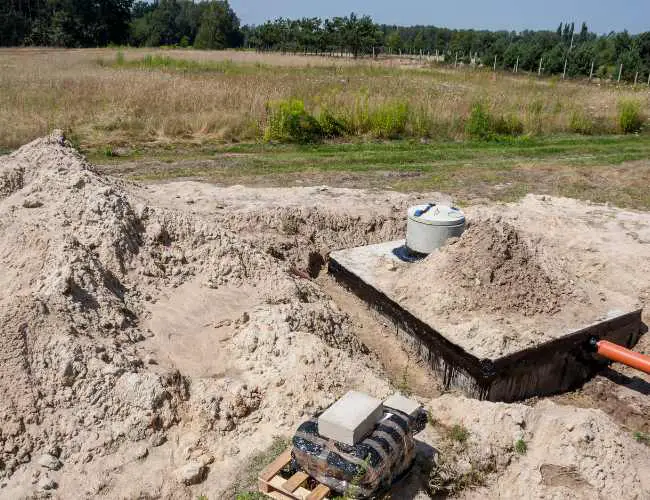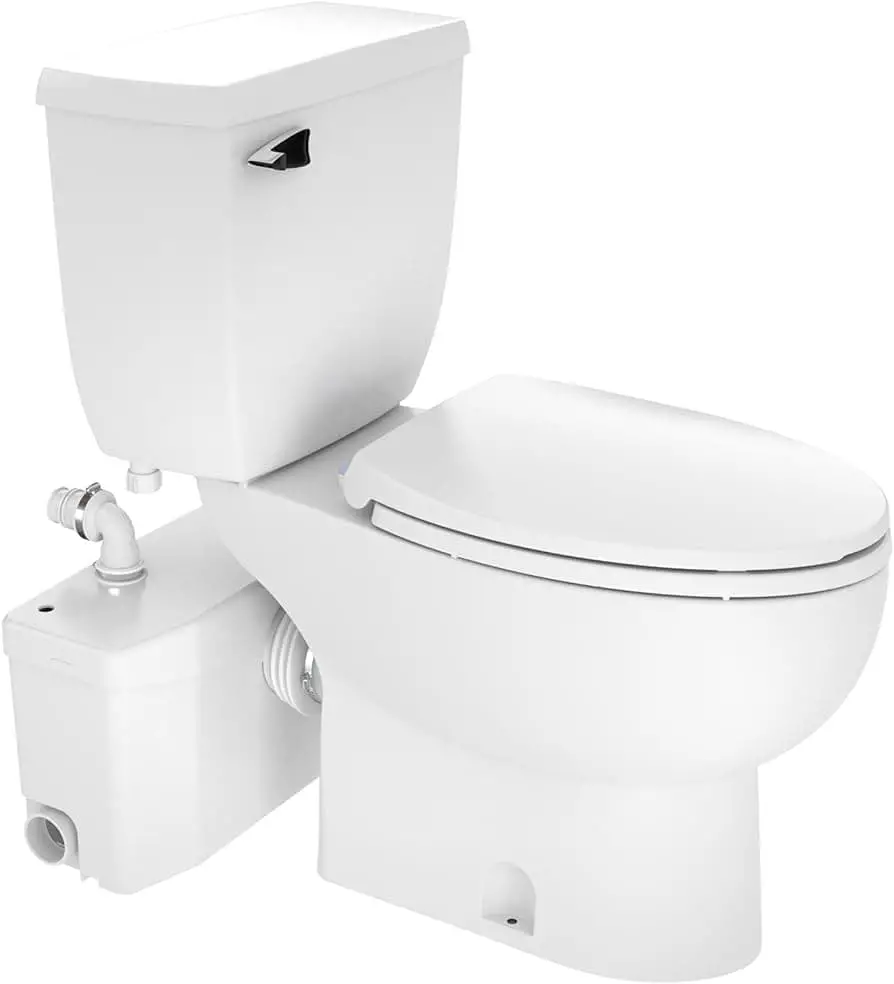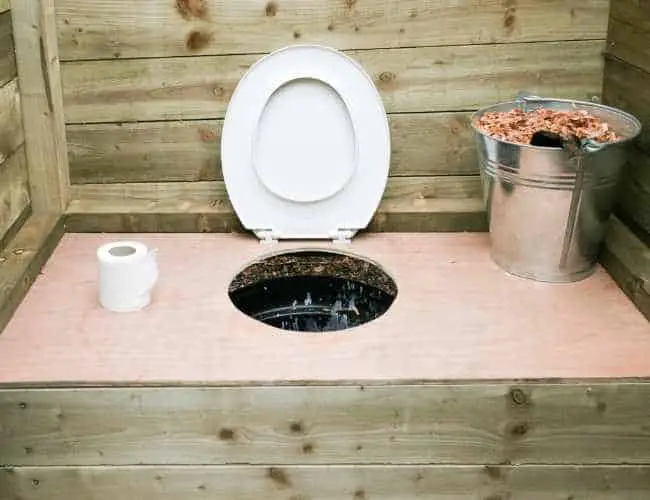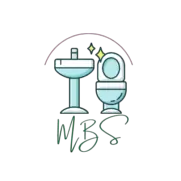When it comes to designing and setting up your home’s bathroom, one crucial question often arises: How far can a toilet be from a septic tank? This seemingly straightforward question is critical for proper waste management and plumbing system functionality. The distance between your toilet and the septic tank can significantly impact the efficiency of waste disposal and the overall sanitation of your home.
Most building regulations typically stipulate a maximum distance, ensuring that waste flows correctly and preventing potential plumbing issues. Yet, homeowners and builders may wonder if there’s any wiggle room in these standards, especially when dealing with unique home layouts or challenging terrains.
In this post, we’ll explore the ins and outs of septic system regulations, the technical aspects that inform these rules, and some innovative solutions for those who need to push the boundaries.
The maximum standard distance a toilet should be from a septic tank is between 5 to 10 feet, but local building codes vary, so always check with your municipal guidelines.

What Is the Standard Distance Required between a Toilet and a Septic Tank?
It may sometimes be necessary to position a toilet further from the septic tank than the standard distance typically allows. Perhaps you have a large property or a unique layout that doesn’t quite fit within conventional guidelines. So, the question arises: Can the toilet be located farther from the septic tank than the standard distance? The answer largely depends on two main factors: local building codes and the ability to ensure proper waste flow.
Local Building Codes:
- Always begin by consulting your local building codes and regulations; these are in place to ensure safety and effectiveness.
- Some areas may permit extended distances with certain conditions or require a special permit.
- Codes often specify the maximum allowable distances based on the septic system design and the topography of your land.
Ensuring Proper Waste Flow:
- Even if local codes allow it, there are technical challenges to consider with increased distance.
- Gravity is a primary force in traditional waste plumbing systems, and to maintain an effective flow, the waste lines need a minimum slope (usually about 1/4 inch per foot).
- Longer distances require precise installation to avoid issues such as slow drainage or clogs.
- Consider larger diameter pipes to reduce the likelihood of blockages and ensure continuous waste movement.
When considering placing your toilet further from the septic tank:
- Hire a professional plumber or civil engineer to help design a system that meets both local code requirements and functional necessities.
- Be prepared for potentially higher installation costs due to the need for additional materials and labor.
In summary, while it may be technically feasible to locate a toilet beyond standard distances from a septic tank, it’s crucial to comply with local regulations and ensure that the system you design can handle the increased demands of a longer waste run. Proper planning and professional guidance are essential to achieving a successful and sanitary outcome.
How Does Distance Between a Toilet and Septic Tank Affect Plumbing?
The distance between a toilet and a septic tank has several implications for the plumbing system. Primarily, it influences the gravity-driven flow of waste and water, the size and slope of the drain pipes, and the potential need for additional fixtures to maintain functionality. Here’s a brief outline of the effects:
| Factor | Short Distance | Long Distance |
|---|---|---|
| Waste Flow | Easier, more direct flow. | Potential for slower flow and clogs. |
| Pipe Slope | Standard slope is often sufficient. | Increased difficulty maintaining slope over a longer stretch. |
| Pipe Diameter | Standard diameter usually adequate. | Larger diameters might be necessary to facilitate flow. |
| Pump Requirements | Rarely needed. | May require lift stations or pumps for uphill scenarios or extended distances. |
| Maintenance Access | Easier access for maintenance. | Additional access points may be needed for potential blockage remediation. |
The ideal plumbing setup ensures that waste moves swiftly and efficiently from the toilet to the septic tank without any hindrance. A shorter distance facilitates this by allowing for a simple, straight run of pipe with the necessary minimum slope (typically 1/4 inch per foot) to let gravity do its job.
However, when the distance increases, the plumbing system must compensate to ensure the waste still moves effectively. For instance, with extended distances, the system may need larger diameter pipes to reduce the risk of clogs and blockages.
Moreover, a longer pipe run can make maintaining the correct slope more challenging. This gradual slope is critical to ensure the waste keeps moving; without it, you could face slow drainage or even back-ups. In cases where a toilet is significantly further from a septic tank, you might also need to install additional fixtures such as lift stations or sewage pumps. These systems help to propel waste along when gravity alone isn’t enough due to the increased distance, horizontal runs, or when the plumbing has to move waste uphill.
Maintaining an extended plumbing system also becomes more complex. Longer pipe runs may require more frequent cleanouts and inspection points to allow for easier access in the event of a blockage. The cost of installation and maintenance can also increase with the additional complexity of the system.
What Are the Best Practices for Installing a Toilet Far from a Septic Tank?
When installing a toilet at a greater distance from the septic tank than usual, it’s essential to follow best practices to ensure the system operates effectively and complies with local building codes. Here are some key best practices:
Consult Local Regulations:
- Always check local building codes for specific requirements on plumbing installations and septic systems.
- Obtain necessary permits before beginning work to ensure everything is up to code.
Design for Efficiency:
- Engage a plumbing professional or civil engineer to create a detailed plan that manages the increased distance.
- Ensure a consistent slope is maintained for the pipe runs, typically 1/4 inch per foot of pipe, to allow gravity to move waste efficiently.
Use Appropriate Materials:
- Opt for larger diameter pipes to prevent clogs over the long distance; a professional can recommend the right size.
- Select high-quality pipe materials that are resistant to corrosion and damage.
Plan for Accessibility:
- Include cleanouts at regular intervals for easy maintenance and to clear potential blockages.
- Install inspection points to facilitate checks and repairs without significant disruption.
Consider Additional Fixtures:
- If gravity flow is insufficient due to distance or elevation, consider installing a lift station or pump.
- Make sure any pumps or mechanical systems are easily accessible for maintenance and repair.
Maintenance and Upkeep:
- Schedule regular inspections and cleanings to keep the system running smoothly.
- Keep detailed documentation of the installation for future reference and maintenance.
Adhering to these best practices ensures that a toilet installed far from a septic tank will function reliably and efficiently, providing long-term sanitation and convenience for your home.
Are There Any Innovative Solutions for Toilets Located at an Extended Distance from Septic Tanks?
In situations where a traditional gravity-fed toilet installation is impractical due to an extended distance from a septic tank, innovative solutions can come to the rescue. These modern alternatives are designed to overcome the challenges of long-distance plumbing while maintaining efficiency and reliability.
Upflush Toilets:
Upflush toilets are an ideal solution for locations below or far away from the main drain line. These toilets use a macerating pump to grind and move waste through a small-diameter pipe to the septic tank, allowing for installation almost anywhere.

Advantages:
- Flexibility in placement without extensive plumbing work.
- Ability to pump waste vertically and horizontally over long distances.
Grinder Pumps:
Similar to macerators, grinder pumps are powerful enough to move waste from a toilet to a septic tank, regardless of distance or elevation. They’re commonly used in basement bathrooms or in homes with significant slope between the house and septic system.
Advantages:
- Efficient waste management with the ability to overcome gravity.
- Durable and capable of handling waste from multiple fixtures.
Composting Toilets:
For the eco-conscious homeowner, composting toilets offer a self-contained unit that decomposes waste without the need for a traditional septic system. While not suitable for every situation, they can be an excellent off-grid option.

Advantages:
- Waterless operation, reducing environmental impact.
- Eliminates the need for a connection to the septic tank.
Vacuum Toilets:
Inspired by airplane lavatories, vacuum toilets use suction to transport waste to the septic tank. This technology requires minimal water and can be effective over long horizontal distances or when a rise in elevation is necessary.
Advantages:
- Low water usage.
- Flexible installation with complex plumbing layouts.
Innovations in plumbing technology have provided a range of solutions for homeowners facing the challenge of installing a toilet far from their septic system. These alternatives not only solve logistical problems but can also offer benefits such as water conservation and flexibility in home design.
Always consult a plumbing specialist to determine the best option for your specific needs and to ensure that any innovative systems align with local building codes and regulations.
Conclusion
In conclusion, while the standard guideline for the question of “how far can a toilet be from a septic tank” remains within 5 to 10 feet, innovations in plumbing technology have opened up new possibilities for those needing flexibility.
By understanding local regulations, maintaining proper waste flow, and potentially incorporating modern solutions, homeowners can effectively manage their bathroom’s plumbing over various distances.
Whether you’re renovating, building anew, or just seeking to improve your home’s waste system, careful consideration and expert advice will lead to a successful setup, no matter how far your toilet is from your septic tank.
